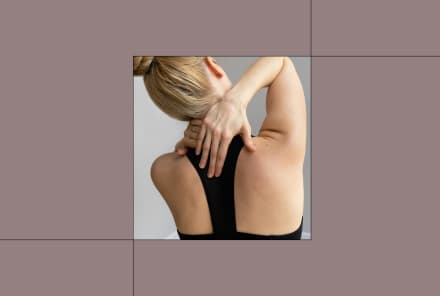Advertisement
An Intro To The 5 Tibetan Rites & How They Can Boost Heart Health

I've been doing yoga for over 20 years—but unfortunately, a busy career as a cardiologist has kept me away from the 60- to 90-minute studio practices I used to love so much.
A year ago, I was introduced to a quick yoga practice reported to be over 2,500 years old, called the 5 Tibetan Rites. After viewing a few videos and reading a short book, I started to engage in the 15-minute sequence every morning, whether at home or on the road. I've kept up with the habit for a year and have made some interesting observations along the way. Here's the scoop.
What are the 5 Tibetan Rites?
The 5 Tibetan Rites, also known as the "Fountain of Youth," are a series of five (sometimes six) exercises meant to be repeated 21 times.
They are thought to increase mobility and flexibility and help the body stay nimble as we age. Increased energy and feelings of calmness, mental clarity, greater spinal flexibility, better sleep, weight loss, healthier digestion, and improved libido have also been associated with the practice.
In addition to these benefits, research has also emerged suggesting that the flexibility of our spine predicts the flexibility of our arteries. Therefore, a yoga practice centered on spine flexibility, like the Tibetans, may help keep our arteries in a youthful state.
How do you do each one?
First Rite
Spin clockwise, with arms outstretched in a T and palms facing down, with your feet hips-distance apart. Place your head down slightly as you spin so you don't get dizzy. Repeat for 21 rotations, or as many as you can if you're a beginner.
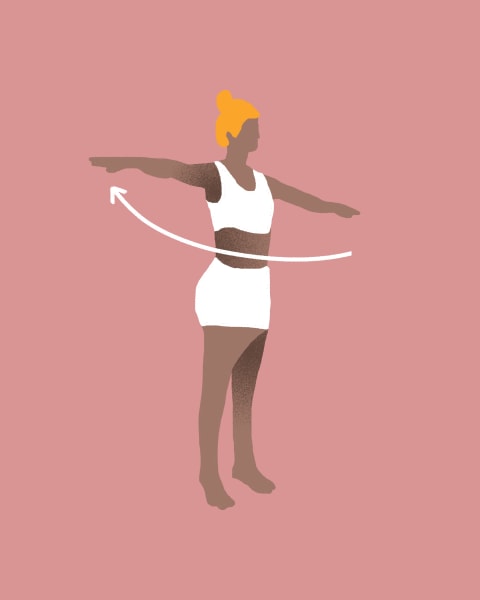
Second Rite
Lying on your back, place your hands alongside your hips. On the inhale, raise the legs and head straight up until you form a J-shape with your body. With the exhale, come back to the floor. Repeat 21 times, or as many as you can if you're a beginner.
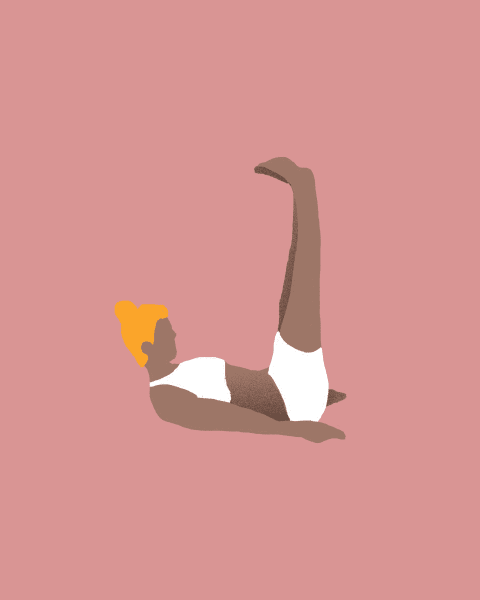
Third Rite
Begin by sitting on your knees, with the feet shoulder-width apart and palms resting on your hamstrings (the back of your upper legs). Slowly drop your head back and open up your chest on the inhale, and lean it forward again on the exhale. Repeat 21 times, or as many as you can if you're a beginner.
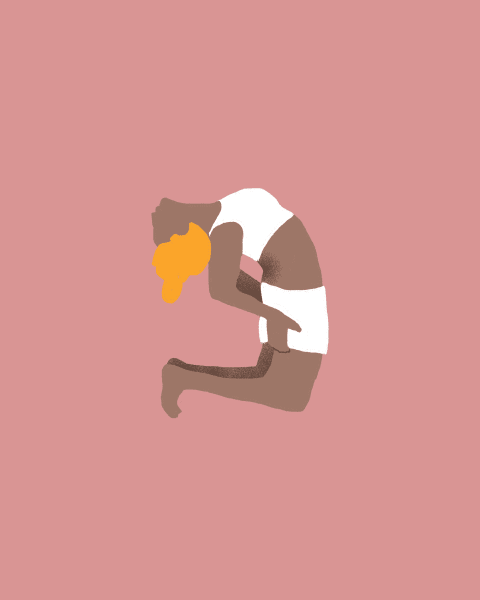
Fourth Right
Start by sitting with legs stretched straight in front of you and your palms on the ground by your hips, fingers facing forward. As you inhale, raise your body to come into a reverse table pose, allowing your head to drop back while keeping the palms facing forward. Exhaling, slowly release to the ground. Repeat 21 times, or as many as you can if you're a beginner.
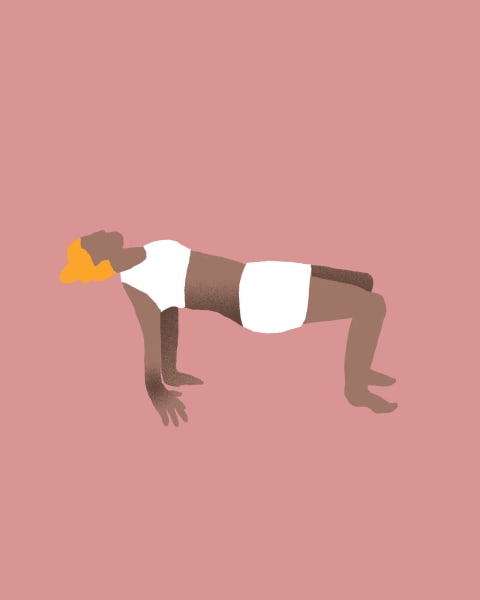
Fifth Rite
Start in upward-facing dog and transition into downward-facing dog with each inhale. Return to upward-facing dog. Repeat 21 times, or as many as you can if you're a beginner.
Some add a Sixth Tibetan Rite claimed to improve sexual endurance, which involves standing straight up and exhaling all air out of the lungs before bending over toward your knees or toes and returning straight up. I practice this one, too, and I usually add a shoulder stand and a plow pose to the flow as well.
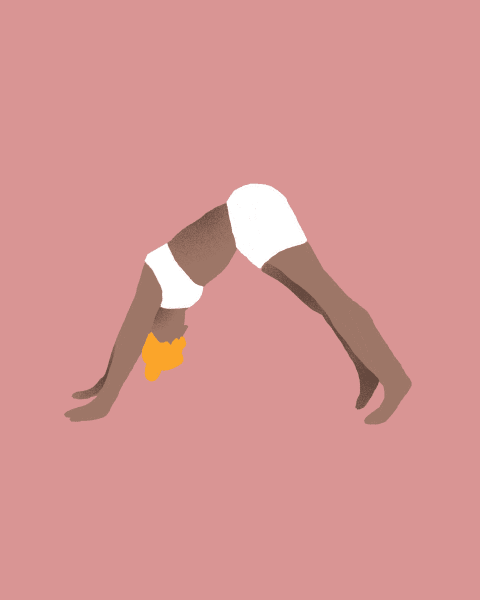
What are the health benefits of this quick yoga practice?
1. Spinal flexibility relates to our arterial flexibility.
In a study in Japan, researchers evaluated the ability of 526 adults ranging in age from 20 to 83 years old to sit and reach their toes, a measure of spinal flexibility. Spinal flexibility predicted arterial youthfulness independent of overall fitness and muscular strength.
2. Stretching exercises improve arterial flexibility.
Researchers asked sedentary but healthy men and women to participate in 13 weeks of strength training, cardio, or stretching exercises. The group doing stretching exercises showed improved arterial flexibility measured by sophisticated ultrasound techniques.
3. Yoga improves arterial flexibility.
Researchers measured arterial flexibility in 42 people starting a 90-minute Bikram yoga practice three times a week for eight weeks. In 24 of the younger participants, arterial flexibility was improved at the end of the study. Cholesterol and insulin levels also fell after the yoga training.
After one year of practicing the 5 Tibetans, it did indeed improve my arterial health.
In my yearlong practice of the Tibetans, I used a simple device developed by a physician who is interested in yoga to measure and track my arterial flexibility reported out as arterial age. The device measures the stiffness of the aorta, which is known to predict both heart disease and dementia in later life. Aortic stiffness has been shown to improve with both walking and stress reduction. During my year, my arterial age dropped from the low 50s (I am 58 years old) to the low 20s. I wake up without back pain or stiffness and work all day long without back complaints.
In my anti-aging cardiology practice, the goal is always to maintain a youthful body, mind, and spirit. The Tibetan Rites make up one practice with measurable results that I now recommend to patients to help them do just that.

Dr. Joel Kahn is the founder of the Kahn Center for Cardiac Longevity. He is a summa cum laude graduate of the University of Michigan School of Medicine and is a professor of medicine at Wayne State University School of Medicine. He is owner of GreenSpace Cafe in Ferndale, Michigan. His books, The Whole Heart Solution, Dead Execs Don't Get Bonuses, and Vegan Sex are all available for sale now.
More from the author:
Functional Nutrition Training
Check out Functional Nutrition Coaching
A cutting-edge nutrition deep dive taught by 20+ top health & wellness experts
Learn moreMore from the author:
Functional Nutrition Training
Check out Functional Nutrition Coaching
A cutting-edge nutrition deep dive taught by 20+ top health & wellness experts
Learn more
Dr. Joel Kahn is the founder of the Kahn Center for Cardiac Longevity. He is a summa cum laude graduate of the University of Michigan School of Medicine and is a professor of medicine at Wayne State University School of Medicine. He is owner of GreenSpace Cafe in Ferndale, Michigan. His books, The Whole Heart Solution, Dead Execs Don't Get Bonuses, and Vegan Sex are all available for sale now.
Watch Next
Enjoy some of our favorite clips from classes
Enjoy some of our favorite clips from classes
What Is Meditation?
Mindfulness/Spirituality | Light Watkins
Box Breathing
Mindfulness/Spirituality | Gwen Dittmar
What Breathwork Can Address
Mindfulness/Spirituality | Gwen Dittmar
The 8 Limbs of Yoga - What is Asana?
Yoga | Caley Alyssa
Two Standing Postures to Open Up Tight Hips
Yoga | Caley Alyssa
How Plants Can Optimize Athletic Performance
Nutrition | Rich Roll
What to Eat Before a Workout
Nutrition | Rich Roll
How Ayurveda Helps Us Navigate Modern Life
Nutrition | Sahara Rose
Messages About Love & Relationships
Love & Relationships | Esther Perel
Love Languages
Love & Relationships | Esther Perel
